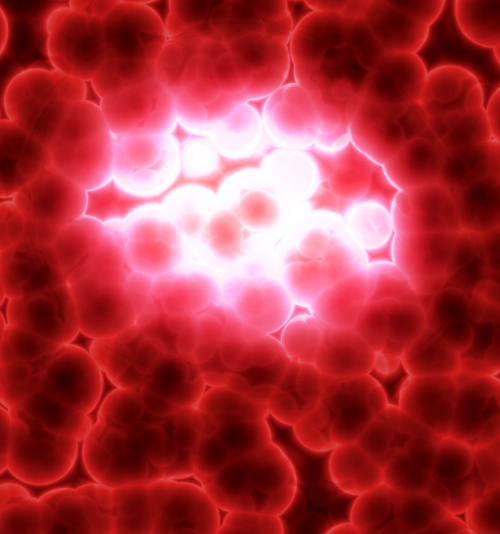New genetic view shows cancer precursor
 In a world-first, scientists have observed an important process in the formation of tumours.
In a world-first, scientists have observed an important process in the formation of tumours.
Researchers in the US have mapped how information flows through the genetic circuits that cause cancer cells to become metastatic.
The study reveals a common pattern in the decision-making that allows cancer cells to both migrate and form new tumours, which may open the door to new drugs that interfere with the genetic switches that cancer must flick to form cancer stem cells and tumour cells.
“Cells have genetic circuits that are used to switch certain behaviours on and off,” said biophysicist Eshel Ben-Jacob, a senior investigator at Rice University's Center for Theoretical Biological Physics.
“Though some of the circuits for metastasis have been mapped, this is the first study to examine how cancer uses two of those circuits, in concert, to produce not just cancer stem cells, but also dangerous packs of hybrid stem-like-cells that travel in groups to colonize other parts of the body.”
Metastasis - the spread of cancer between organs - causes more than 90 percent of cancer deaths, but not all tumour cells can metastasise.
The switch that many cancer cells use to become metastatic is the circuit that governs the epithelial-to-mesenchymal transition, or EMT.
EMT is an important feature in embryonic development and wound healing, as it allows cells to revert back along their developmental path and take on stem-like features that allow them to form new tissues and repair tissue damage.
Cancer cells use the EMT process as a backdoor to allow tumor cells to break away and migrate to other parts of the body.
Once there, the cells reverse the switch and transition back to epithelial cells to form a new colony.
“According to the prevailing cancer dogma, cells that become fully mesenchymal pose the highest risk of metastasis progression,” said Dr Ben-Jacob.
“Indeed, most diagnostic and therapeutic efforts to date have focused on targeting these cells. Notwithstanding that the hybrid cells are more versatile and have the advantage of moving together as a group, they have been assumed to be less harmful than their fully mesenchymal cousins.
“Our discovery - that squads of hybrid cancer cells also have ‘stemness’ characteristics - challenges this picture.”
The coupling between two of these switches shows that two seemingly independent and distinct cellular programs - one that drives migration and a second that drives adaptation and tumorigenesis –are linked.
“The existence of a link suggests that we may be able to simultaneously target both processes with innovative new therapies,” said researcher Dr Herbert Levine.
More information is available in this report from Rice University.








 Print
Print